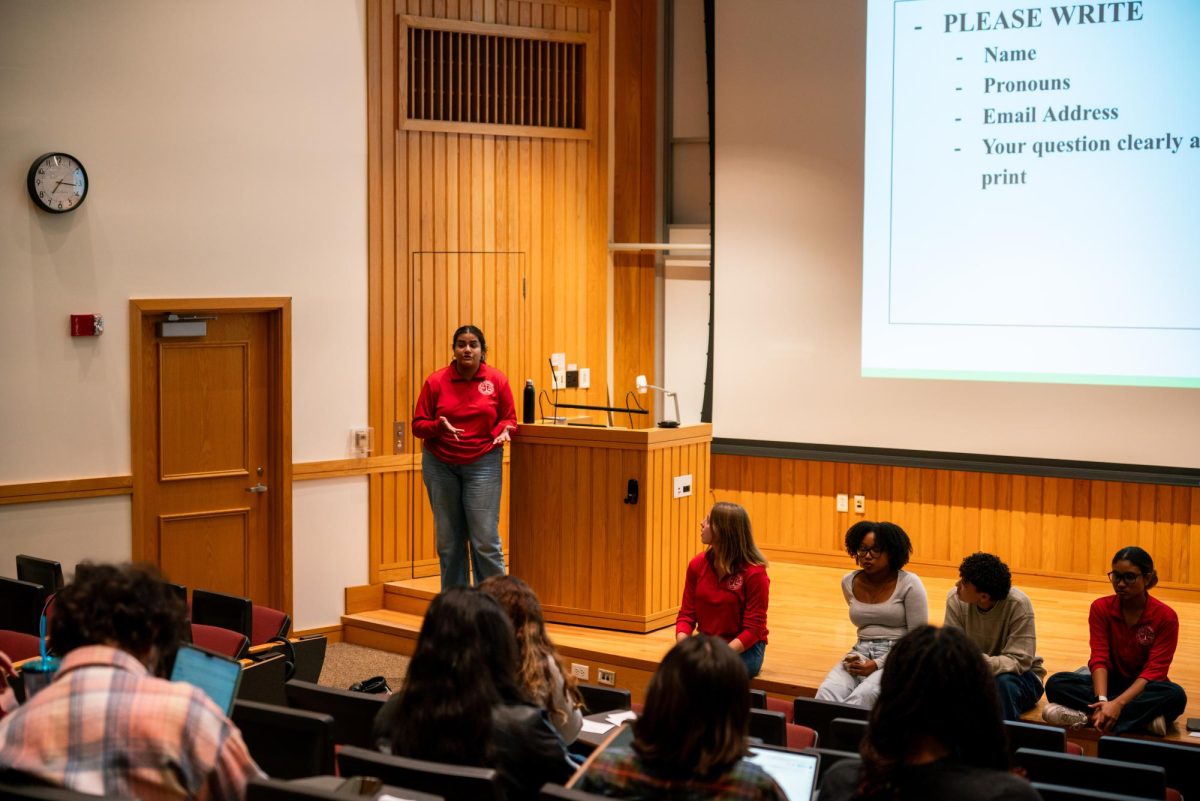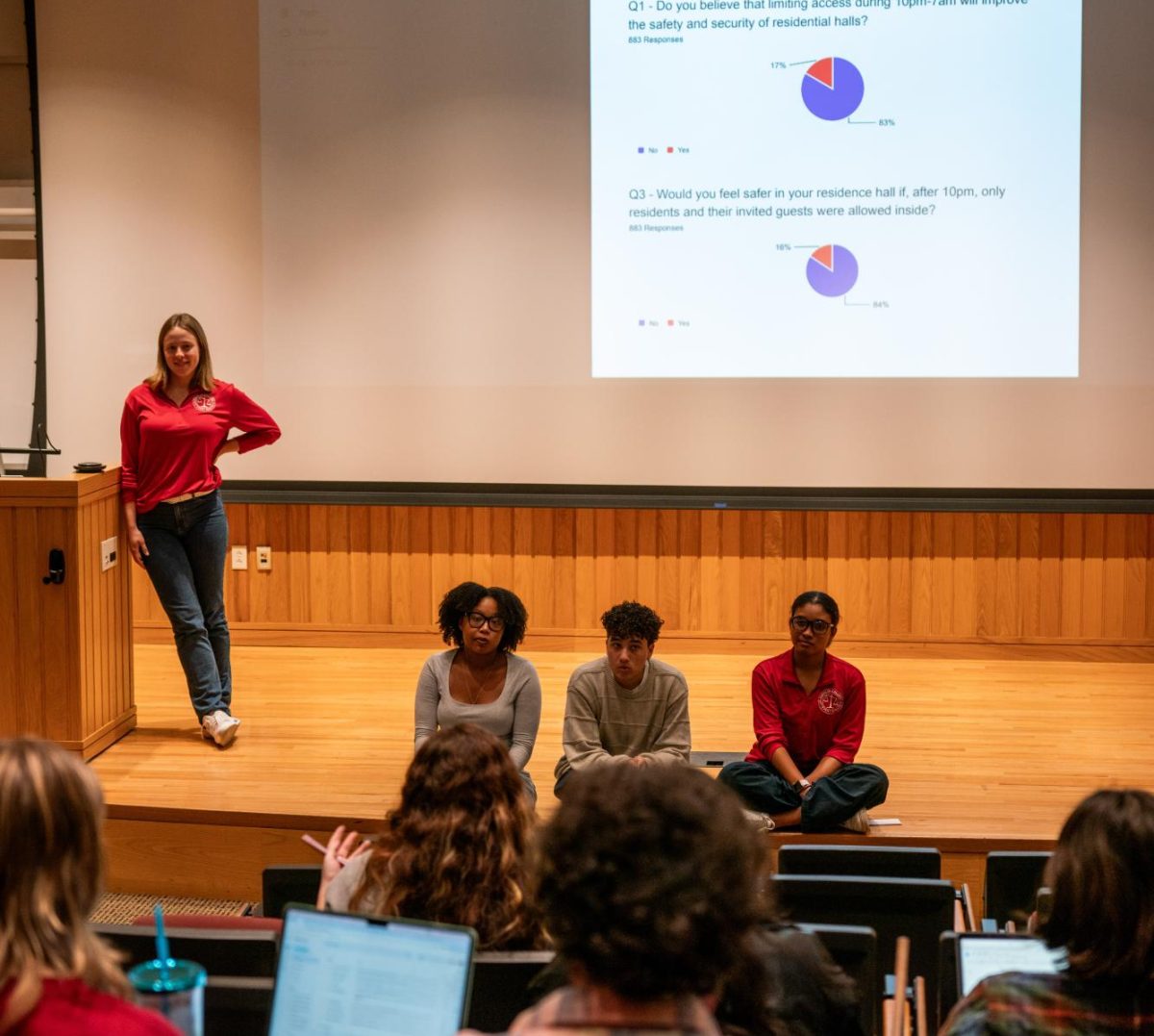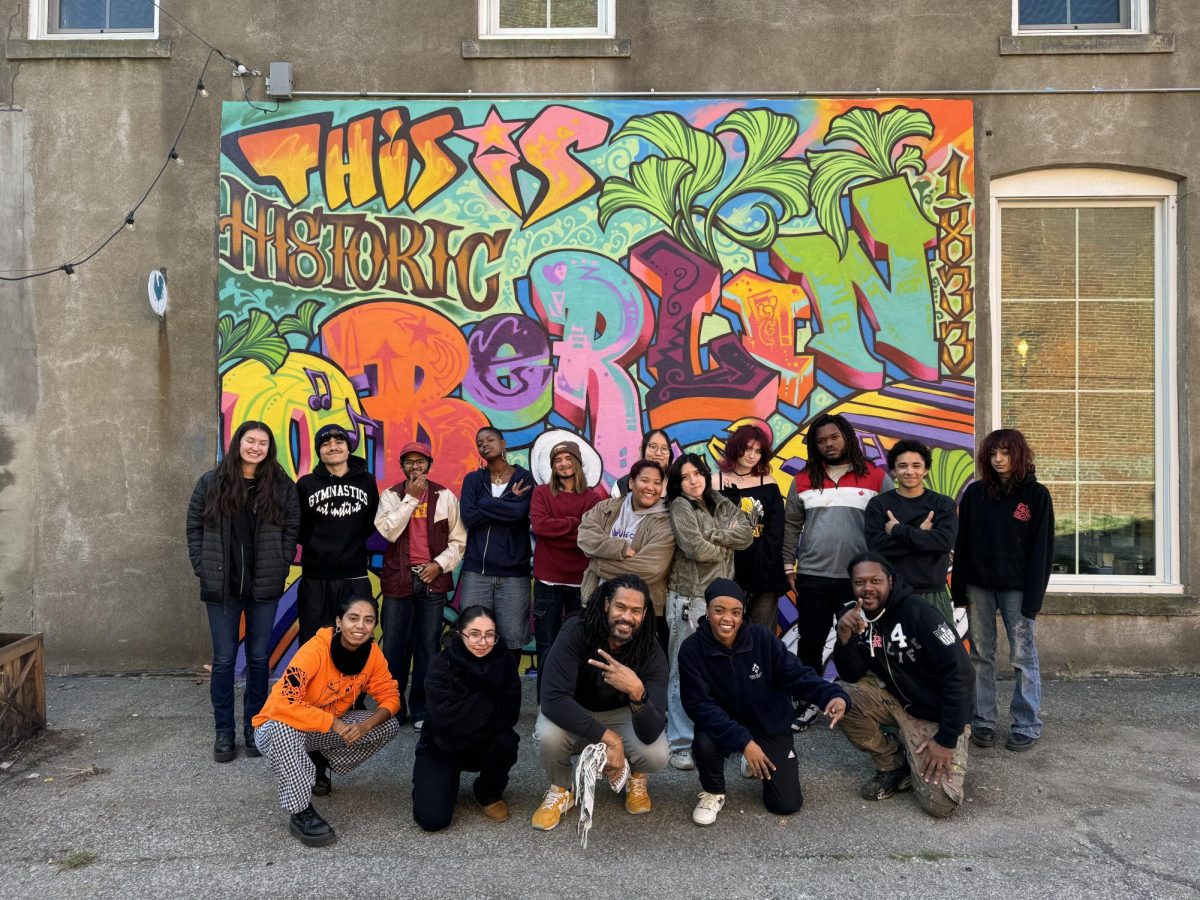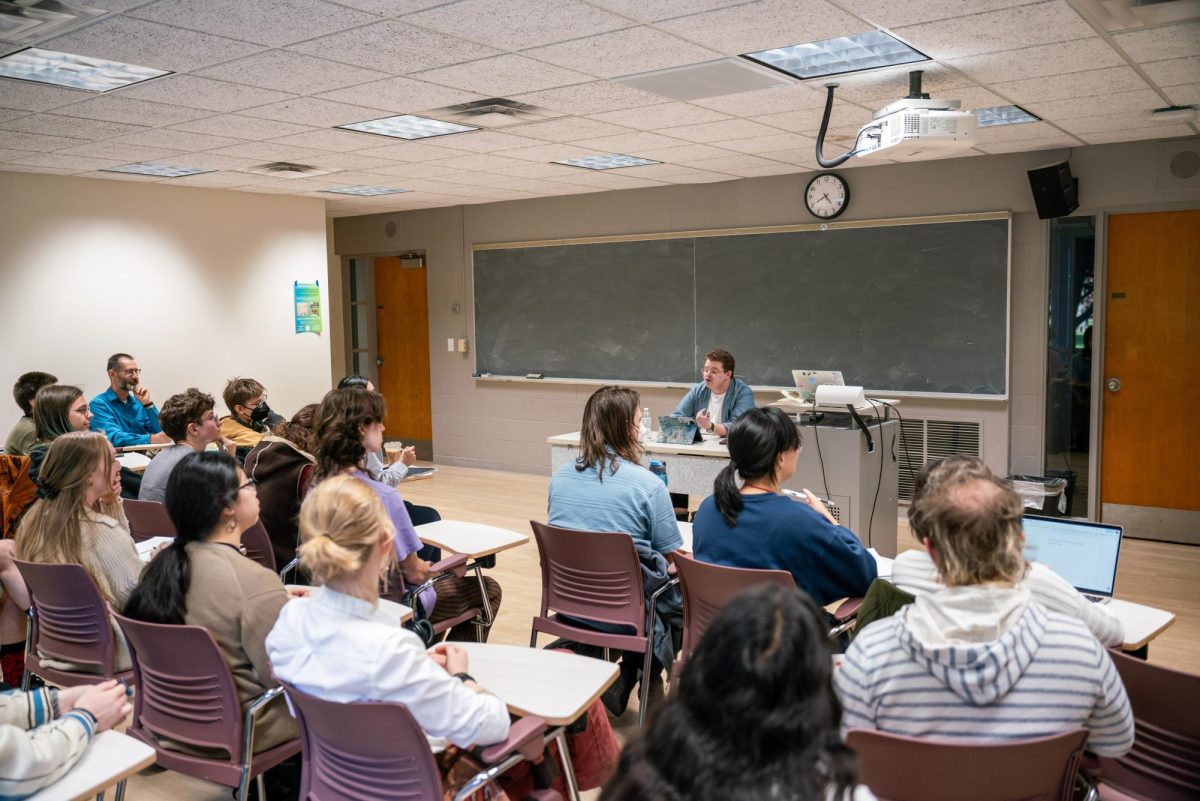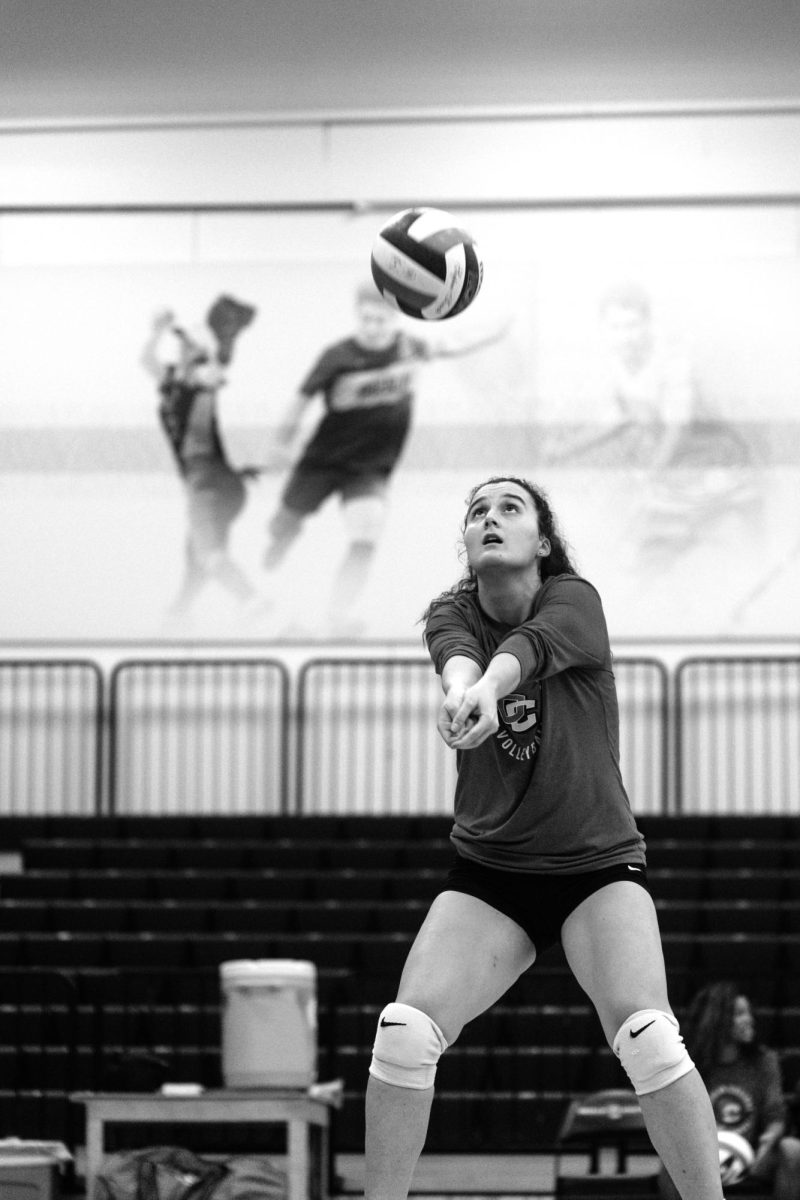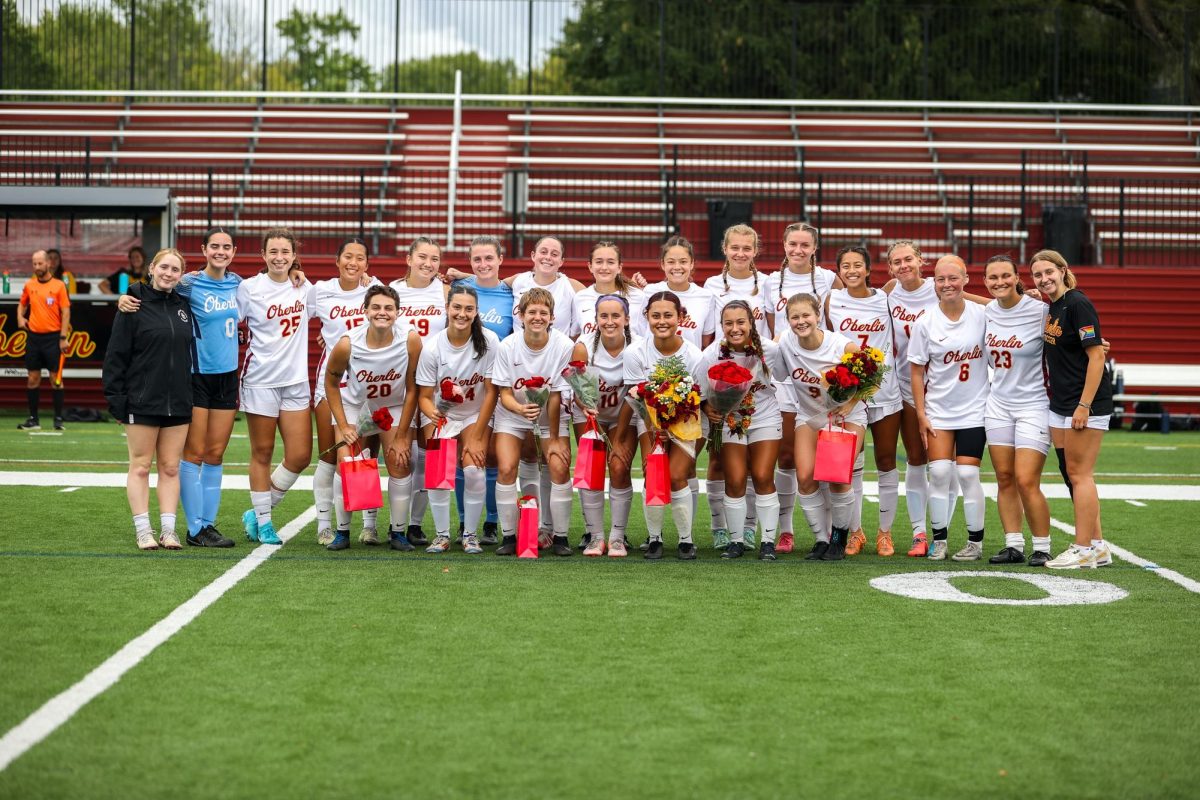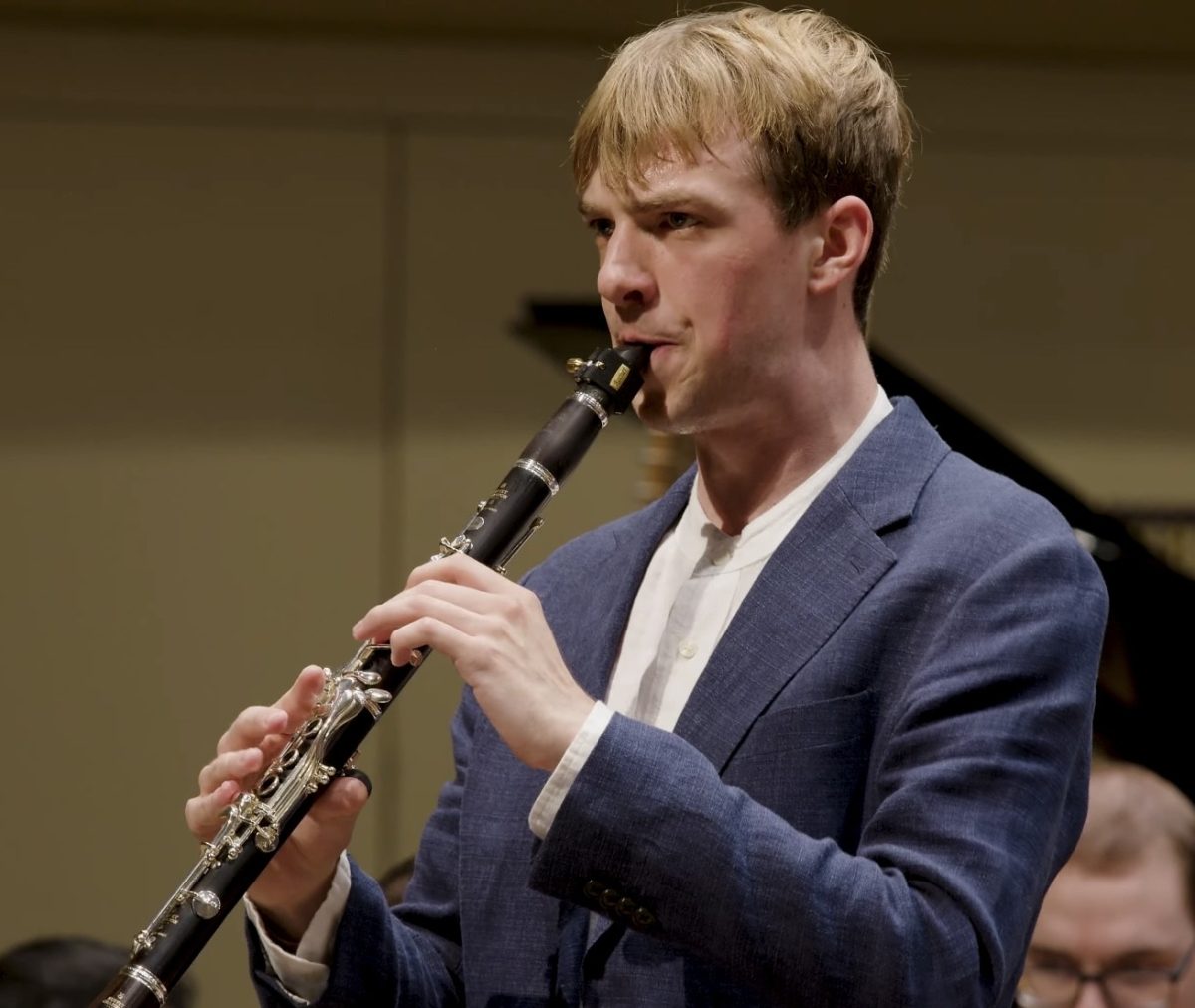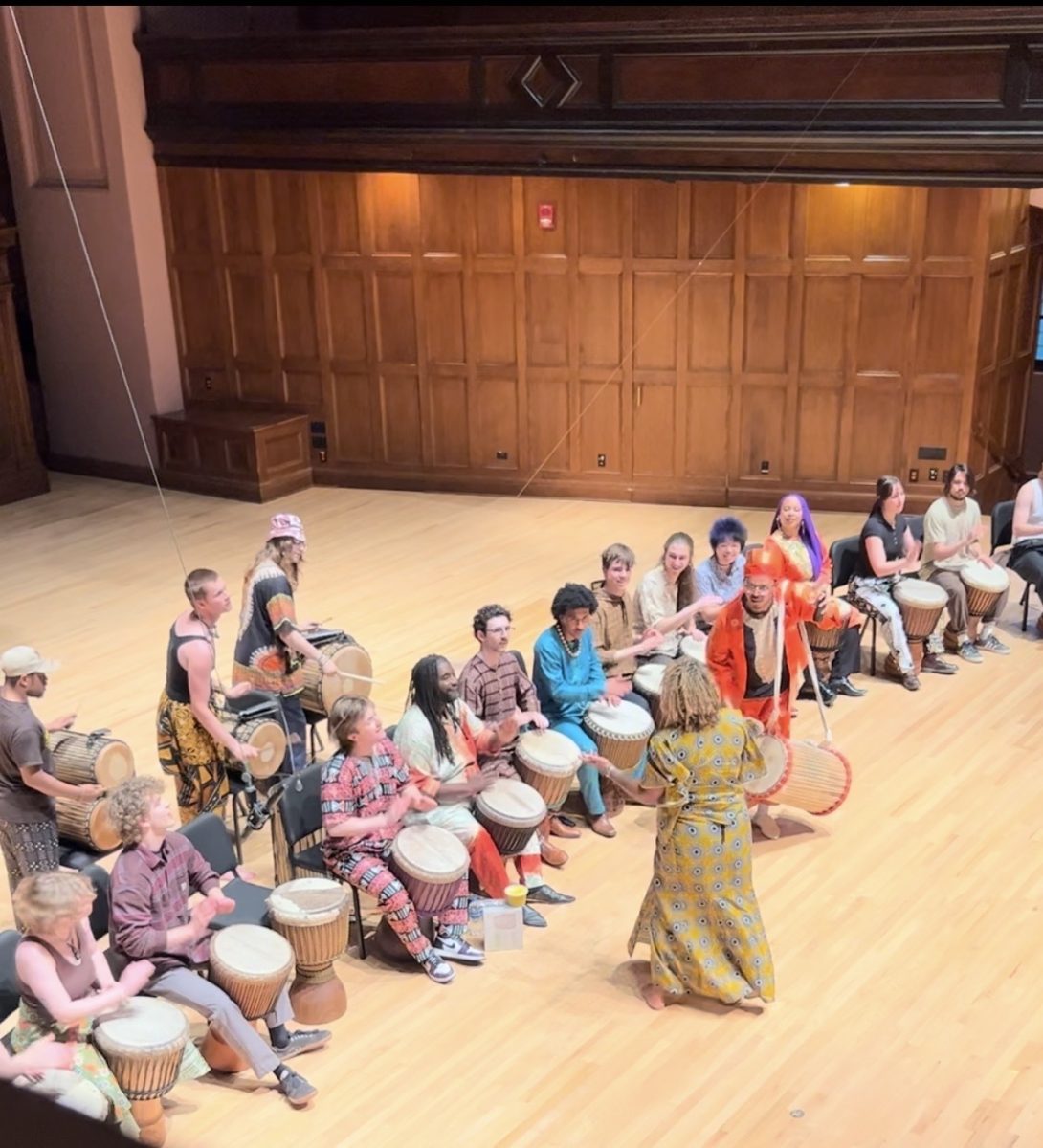SFP Installation Sparks Debate
September 26, 2014
Oberlin Students for a Free Palestine launched an installation on Wednesday in Wilder Bowl titled “2,133 Black Flags” in observance of Palestinian casualties during Operation Protective Edge this summer. On its Facebook page, SFP stated that the installation, which featured a large banner posted beside a graveyard-like display of flags representing Palestinian deaths, was organized in solidarity with Tuesday’s International Day of Action on College Campuses for Palestine.
The display, scheduled to remain in place until Saturday, Sept. 27, elicited a variety of responses from students and community members. The following are two students’ impressions of the installation. Each response reflects the student’s personal views only. These opinions are in no way intended to represent the views of other community members or any student organization.
Focus on Religion Disregards Humanitarian Message
I am actually very surprised that an installation intended to raise awareness of the death of Palestinians is viewed as expressing anti-Jewish sentiment. Despite my limited knowledge about the Jewish faith, I believe that raising awareness about injustice is not at all contradictory to that belief system. I don’t believe that to be pro-Palestine means to be anti-Israel, and I never thought that this view would be seen as anti-Semitic. This seems to me to be more of a humanitarian issue than a religious one.
I really do not mean to trivialize any pain that Oberlin Students for a Free Palestine’s actions may have caused, but I also feel that the driving force behind the choices and opinions of the pro-Palestine movement is not at all anti-Semitic — including, as a part of that movement, the support for divestment from Israel. I feel that everyone just wants to live happily and peacefully, but that people have different ways of supporting that. It is not out of hate for Jewish people that these organizers are working; it is out of a love for humanity. I recognize that some pro-Palestinian activists and their actions do become anti-Semitic, but I also feel that it is important to recognize the movement as a whole as one that is in solidarity with Judaism (though it may not necessarily be in solidarity with Israel).
Interpreting this installation as expressing antiSemitic sentiment perpetuates the idea that Jews are uniformly pro-Israel and anti-Palestine, and this is problematic in its own ways. As someone whose family has struggled through inter-religious conflict, I would hope that everyone would support me, regardless of religion, regardless of the occasion, for each and every day that I chose to remember the lives that were lost.
–Maansi Sahay Seth
College third-year
Concurrence with Holy Days Causes Students Discomfort
What I find tough about the “2,133 Black Flags” installment is figuring out why it upset me so much. I myself am uncomfortable with the actions of Israel and the IDF, and I support awareness for Palestinian casualties.
As an American Jew, I don’t align with Israel. The rest of the world, however, thinks otherwise. As attacks on Jews living in Paris in July made clear, Israel’s actions impact Jews around the globe. Anti-Semitism is still alive, and many are incapable of understanding that Jews are not all of the same mind. This summer, for the first time, I felt like I was in danger because of my Judaism.
In a perfect world, religion would be absent from this conversation, but the timing of this protest left me feeling unsafe. The Oberlin Students for a Free Palestine organized their event in observance of the International Day of Action on College Campuses for Palestine, which was Tuesday, Sept. 23; however, they ultimately held the display from Sept. 24–27, coinciding with Rosh Hashanah, among the holiest days in Judaism. If this was an oversight, SFP should issue an apology for its insensitivity. Instead, it responded with the excuse that its membership, too, includes Jews. The flags and a harshly worded sign were placed right outside where I attend religious services. That caused myself and others considerable discomfort as the message almost seemed to be that the IDF’s actions were somehow our fault.
Causing productive discomfort is one thing, but this installation went beyond that in poor taste. I believe there were better avenues for raising awareness this week, such as a moment of silence or a prayer for peace during High Holy Days services. I hope that this sparks conversation about what anti-Semitism looks like on our campus and nationwide, and I hope that we can continue a meaningful dialogue in the future.
–Maggie Bussard
College third-year






